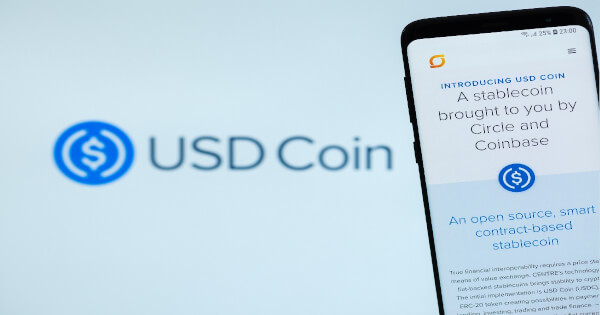SOL falls behind multiple altcoin competitors as its onchain activity, fee and DApp revenues slump. Cointelegraph explains why.
Why Bitcoin’s popular narratives don’t match the data: James Check on 2026
Bitcoin’s price may look deceptively familiar, but according to onchain analyst James Check, the market beneath the surface has changed far more than most investors realize.
In a new interview with Cointelegraph, Check revisits a question he was asked earlier this year: Are we in a bull market or a bear market?
While Bitcoin (BTC) is trading near similar price levels, Check says that leverage, investor cost base, and sell-side behavior are now very different, and all those shifts matter. In fact, a majority of the capital currently invested in Bitcoin was acquired at higher prices, leaving many holders underwater and shaping a cautious sentiment.
One of the most persistent myths this cycle, Check argues, is the idea that long-term holders simply don’t sell. Onchain data shows that coins of all ages, from months to many years old, have been returning to the market at an unusually fast pace. This supply, he says, has played a significant role in recent price action, even if the narrative only caught up much later.
At the same time, the analyst pushes back against claims that exchange-traded funds (ETFs), Michael Saylor or corporate treasuries have “captured” Bitcoin. While those entities are important, they represent only a portion of total market activity. The bigger takeaway, he suggests, is how large and liquid Bitcoin has become, capable of absorbing massive flows without the kind of volatility seen in earlier cycles.
Looking ahead, Check shares his current framework for 2026, challenging both blind optimism and outright bearishness. The conversation also touches on sovereign adoption, portfolio construction and longer-term risks that most investors rarely think about.
Watch the full interview with James Check on Cointelegraph’s YouTube channel to hear the complete analysis and the data behind it.
Related: Bitcoin institutional buys flip new supply for the first time in 6 weeks
Crypto losses near $3.4B as hackers went ‘big game hunting’
Crypto hackers focused on large crypto entities and personal crypto wallets this year, resulting in $3.4 billion in crypto losses in 2025 — the highest figure since 2022.
Just three hacks in 2025, led by the $1.4 billion hack of crypto exchange Bybit, accounted for 69% of all losses from January through to early December, a Chainalysis report released on Thursday found, with the largest attacks a thousand times larger than the typical incident.
Andrew Fierman, the head of national security intelligence at Chainalysis, told Cointelegraph that while massive attacks drove this year’s uptick in losses, it’s unclear if 2026 will unfold in the same way.
“It’s difficult to predict if it will get worse in 2026, as hacks are very outlier-driven — one or two big hacks can set records for a given year. But what I can say is that this trend of big game hunting seems to be continuing, and there’s no reason to believe hacks will decline next year,” he said.
Wallet and private key compromises are a popular target
Meanwhile, Fierman said that on the opposite end of the spectrum, personal wallets have also become a popular target for hackers.
They represented 7.3% of the total stolen value in 2022 and 44% in 2024. This year it’s around 20%, but ignoring the Bybit hack, the total would have been closer to 37%.
However, the overall amount stolen from individual hacks declined from $1.5 billion in 2024 to $713 million this year, despite the number of incidents nearly tripling compared to 2022.

“These amounts are smaller because individual personal wallets tend to hold less funds than large exchange wallets, which pool many users’ funds together,” Fierman added.
DeFi protocols adopted more effective security measures
DeFi total locked value is around $119 billion, according to the analytics platform DefiLlama, more than double from 2023 lows when it dropped to below $40 billion.
However, Chainalysis said the recovery in DeFi markets hasn’t led to a spike in hacks, which presents “a clear divergence from historical trends.”
Previously, areas of the industry flush with funds tended to suffer more hacks. However, in this case, Chainalysis points to DeFi protocols implementing more effective security measures and attackers shifting their focus to wallets and centralized services as possible causes.
“The sustained lower level of DeFi hacks, even as billions of dollars have returned to these protocols, represents a meaningful change,” the Chainalysis team said.
North Korea is becoming more sophisticated
North Korean hacker crews were responsible for $2.02 billion in stolen cryptocurrency in 2025, an additional $681 million over the total in 2024, through tactics such as embedding IT workers inside projects.

Analysis found that North Korean hackers executed fewer but far more damaging attacks in 2025, which Chainalysis attributes to an increase in sophistication and patience as they focus more on achieving larger scores.
Related: Solana under ‘industrial scale’ DDoS attack: Co-founder says it’s ‘bullish’
“The regime is consistently training and developing new tactics by which their operators execute their strategies, whether infiltrating Web3 companies as IT workers or finding exploitable access points through third-party vendors,” Fierman said.
“While with every hack the industry learns more about DPRK tactics, and strengthens security measures to mitigate future risk, the DPRK is also evolving, in an ongoing attempt to find new attack vectors to continue yielding returns for the regime through their ill-gotten gains.”
Magazine: Do Kwon sentenced to 15 years, Bitcoin’s ‘choppy dance’: Hodler’s Digest, Dec. 7 – 13
Kraken-backed xStocks launches on TON Wallet in ‘nearly all markets’
Kraken-backed tokenized securities platform xStocks is launching on TON Wallet, a self-custodial wallet on the Telegram messenger.
Following an initial rollout on Wallet in Telegram, xStocks is now live on TON Wallet, marking the offering’s official launch on Telegram-linked blockchain, The Open Network (TON), Kraken announced Thursday.
“Launching xStocks on TON brings tokenized equities onto truly open infrastructure,” Kraken co-CEO Arjun Sethi said in the announcement, adding that the launch marks the first time for Telegram users to access tokenized US equities onchain.
The initial rollout will include 10 tokenized stocks, including Apple (AAPLx), Amazon (AMZNx), Coinbase (COINX), Google (GOOGLx) and Strategy (MSTRx), which together account for at least 95% of turnover, according to a spokesperson for TON Wallet.
The offering is not available in the US, EU and Australia
“Stocks and ETFs will be accessible in nearly all markets where TON Wallet is currently available,” Egor Danilov, chief product officer at The Open Platform (TOP) and Wallet in Telegram, told Cointelegraph.
However, the offering will not be available at launch in key markets, including the US, the European Union, and Australia, he said, noting that the rollout aligns with regulatory requirements and xStocks’ existing framework.
“Access will expand gradually as regulatory guidance allows,” Danilov said, emphasizing that xStocks are not available in the US nor to US persons. “Distribution will continue to respect regional rules and licensing requirements,” he added.
US market still in focus for some tokenization firms
XStocks’ limited geographic rollout on TON reflects the company’s view that tokenized US equities should initially be targeted at customers in developing markets rather than in advanced economies.
“Bringing xStocks onto TON is part of that shift — real financial products becoming available to people globally through familiar digital tools, rather than only through financial institutions in developed markets,” Danilov told Cointelegraph.
Related: Coinbase adds stock trading, prediction markets in ‘everything app’ push
By contrast, some major tokenization providers have taken a more optimistic view of the US market. Securitize, one of the largest firms in the sector, has said it sees a viable regulatory pathway for tokenized securities in the United States, and that its tokenized stocks are already available to US investors.
On Dec. 9, Securitize CEO Carlos Domingo told Cointelegraph that the company’s experience shows there is a “clear regulatory path for issuers to natively tokenize assets for US investors.”
Bitcoiners push for quantum-resistant BIP-360 upgrade as debate heats up
A small but growing group of Bitcoin advocates and crypto fund managers is urging the network to accelerate work on quantum-resistant signatures, arguing that the perception of a future “quantum threat” could become a market risk long before it becomes a practical one.
Some supporters are pointing to a draft Bitcoin Improvement Proposal known as BIP-360, which would introduce a post-quantum signature option for Bitcoin addresses that could be vulnerable to future advances in quantum computing.
The implementation must be finalized and deployed in 2026, said Charles Edwards, the founder of quantitative Bitcoin (BTC) and digital asset fund Capriole.
However, the implementation of the new standard would require wider consensus among hardware wallet providers, node operators and cryptocurrency exchanges, added Capriole in a Thursday X post. Around “20-30% of Bitcoin will be taken by a quantum hacker in the next few years,” Edwards said. “I believe we should burn all coins that do not migrate to BIP-360 by 2028.”
Related: Bitcoin treasuries stall in Q4, but largest holders keep stacking sats
However, other industry watchers see quantum computing as a short-term risk for Bitcoin’s price.
“Pro-tip for quantum FUD promoters. Bitcoin does not use encryption. Get your basics right, or it’s a tell,” wrote Adam Back, co-founder and CEO of Blockstream, and the inventor of Hashcash, in a Thursday X post, adding that the quantum computing threat is still “decades away.”
Samson Mow, the CEO of Bitcoin technology company Jan3, also mocked the idea of early quantum computing threatening the Bitcoin network.
“Quantum computing can’t even factor 21, yet people are panic selling because they think it will kill Bitcoin,” wrote Mow in a Wednesday X post.
Related: Bitcoin investor loses retirement fund in AI-fueled romance scam
Taproot questions and competing proposals
Bitcoin’s latest Taproot format, which is perceived as quantum vulnerable, is declining in usage, from 42% of transactions in 2024 to just 20%, signaling that users may be worried about Bitcoin’s quantum threat.

“I’ve NEVER seen the latest format losing adoption before. Taproot is Quantum Vulnerable, while older SegWit and Legacy are not,” wrote Bitcoin analyst Willy Woo, in a Wednesday X post.
Bitcoin’s Taproot update is the most important upgrade the cryptocurrency has experienced since 2017, when Segregated Witness (SegWit) was activated. Taproot aimed to upgrade the privacy and efficiency of the Bitcoin network.
Meanwhile, Back, one of the leading cryptographers, proposed a new hash-based signature scheme as a promising post-quantum alternative for Bitcoin, where security would rely solely on hash function assumptions similar to the ones currently used in the Bitcoin network’s design.

Hash-based signature schemes like ECDSA and Schnorr signatures “offer a promising path for securing Bitcoin in a post-quantum world,” according to the paper released by Back’s Blockstream Research on Dec. 5.
The Elliptic Curve Digital Signature Algorithm (ECDSA) uses elliptic-curve cryptography to verify the authenticity and integrity of a message. Schnorr signatures are another signature scheme praised for enhancing privacy and reducing data size, due to their ability to combine multiple signatures into one.
Magazine: Bitcoin vs. the quantum computer threat — Timeline and solutions (2025–2035)
Price predictions 12/17: BTC, ETH, BNB, XRP, SOL, DOGE, ADA, BCH, HYPE, LINK
Key points:
-
Bitcoin failed to hold above $90,000, indicating a lack of demand at higher levels.
-
Several major altcoins started a recovery, but the higher levels attracted solid selling pressure from the bears.
Bitcoin (BTC) bulls pushed the price above $90,000 on Wednesday, but higher levels attracted selling by the bears. Spot BTC exchange-traded funds (ETFs) have recorded outflows of $634.8 million this week, according to Farside Investors data, indicating a cautious approach by institutional investors.
CryptoQuant analyst MorenoDV_ said in a recent Quicktake analysis that the True Market Mean (TMM), which represents the cost basis of all non-dormant coins, excluding miners, acts “like a psychological line in sand.” If the TMM, currently at $81,500, cracks, BTC could fall sharply, searching for support in the coming months.
At the other end of the spectrum are Grayscale analysts, who remain optimistic about 2026. In its 2026 outlook report, Grayscale said that BTC could reach a new all-time high in the first half of next year on the back of macro tailwinds and better regulatory clarity in the US.
What are the crucial support and resistance levels to watch out for in BTC and major altcoins? Let’s analyze the charts of the top 10 cryptocurrencies to find out.
Bitcoin price prediction
Buyers pushed BTC back above the uptrend line on Wednesday, but the long wick on the candlestick shows selling at higher levels.

The bears will try to pull the Bitcoin price below the $84,000 support. If they manage to do that, the BTC/USDT pair could retest the crucial level at $80,600. Buyers are expected to fiercely defend the $80,600 to $73,777 zone.
The first sign of strength will be a break and close above the 20-day exponential moving average ($90,037). The pair could then climb to $94,589 and subsequently to the psychological level of $100,000.
Ether price prediction
Ether (ETH) rebounded off the uptrend line on Tuesday, but the recovery stalled at the 20-day exponential moving average (EMA) ($3,066) on Wednesday.

The bears are attempting to strengthen their position by pulling the Ether price below the uptrend line. If they manage to do that, the ETH/USDT pair could drop to $2,716 and then to $2,623.
Buyers have an uphill task ahead of them. They will have to drive the Ether price above the $3,350 resistance to signal a potential trend change in the near term. That opens the doors for a rally to $3,659 and then to $3,918.
BNB price prediction
Buyers tried to push BNB (BNB) back above the 20-day EMA ($883), but the bears successfully defended the level.

The sellers will try to pull the BNB price below the $840 level and test the critical support at $791. Buyers are expected to defend the $791 level with all their might, as a break below it could sink the BNB/USDT pair to $730.
Instead, if the price turns up and breaks above the moving averages, it suggests that the pair could remain range-bound between $791 and $1,020 for some time. Buyers will be back in the driver’s seat on a close above $1,020.
XRP price prediction
XRP (XRP) has been sliding toward the support line of the descending channel pattern, indicating a negative sentiment.

The bulls are expected to mount a strong defense in the zone between the support line of the channel and $1.61. Any relief rally is likely to face selling at the 20-day EMA ($2.03) and then at the 50-day simple moving average (SMA) ($2.18).
If the XRP price turns down from the moving averages, the possibility of a break below $1.61 increases. The XRP/USDT pair could then plummet to the Oct. 10 low of $1.25. On the other hand, a break above the downtrend line signals a potential trend change.
Solana price prediction
The bulls are trying to defend the support line in Solana (SOL), but the weak bounce suggests the bears continue to exert pressure.

The downsloping 20-day EMA ($133) and the relative strength index (RSI) below 39 signal that the bears are in control. A close below the support line indicates the continuation of the downward move. The SOL/USDT pair could plunge to $110 and then to the solid support at $95, where the buyers are expected to step in.
The bulls will have to push and maintain the SOL price above the resistance line to gain the upper hand. The pair could then rally to $172.
Dogecoin price prediction
Dogecoin (DOGE) fell below the $0.13 support on Monday, signaling the resumption of the downtrend.

A minor advantage for the bulls is that the RSI is forming a positive divergence. That suggests the selling pressure is reducing. Buyers will have to swiftly push and sustain the Dogecoin price above the 50-day SMA ($0.15) to signal strength. The DOGE/USDT pair may then ascend to $0.19.
Alternatively, if the price continues lower or turns down from $0.14, it suggests that the bears remain in command. The pair may then tumble to the Oct. 10 low of $0.10.
Cardano price prediction
Cardano (ADA) is struggling to bounce off the $0.37 support, indicating a lack of aggressive buying by the bulls.

Sellers will try to strengthen their position by pulling the Cardano price below the $0.37 level. If they can pull it off, the ADA/USDT pair could plunge to $0.32 and then to the Oct. 10 low of $0.27.
Any relief rally is expected to face selling at the moving averages. The bulls will have to propel and maintain the price above the breakdown level of $0.50 to signal a comeback. The pair may then rally to $0.61.
Related: Solana TVL hits $8.6B six-month lows: Is $80 SOL price next?
Bitcoin Cash price prediction
Bitcoin Cash (BCH) bounced off the 50-day SMA ($534) on Tuesday, and the bulls are attempting to sustain the price above the 20-day EMA ($558) on Wednesday.

If the price fails to maintain above the 20-day EMA, the sellers will again attempt to pull the BCH/USDT pair below the 50-day SMA. If they succeed, the Bitcoin Cash price may dip below the $508 support. That suggests a range-bound action between $443 and $615 for some more time.
Contrarily, if the price closes above the 20-day EMA, it signals a positive sentiment. The bulls will then attempt to push the pair to the overhead resistance at $615.
Hyperliquid price prediction
Buyers are attempting to start a recovery in Hyperliquid (HYPE), but it is likely to face selling near the 20-day EMA ($30.26).

If the price turns down from the 20-day EMA, the HYPE/USDT pair may resume its downtrend. The pair may decline to $24 and then to the Oct. 10 low of $20.82.
Contrary to this assumption, if the price turns up and breaks above the 20-day EMA, it suggests that the selling pressure is reducing. The pair may then climb to the breakdown level of $35.50, which is a critical level to watch out for. If buyers overcome the resistance, it indicates that the downtrend could be over.
Chainlink price prediction
Chainlink (LINK) has been trading below the moving averages, increasing the likelihood of a drop to the $10.94 support.

Buyers are expected to vigorously defend the $10.94 level, but the relief rally may face selling at the moving averages. If the price turns down from the moving averages, the LINK/USDT pair could dive to the Oct. 10 low of $7.90.
Contrary to this assumption, if the Chainlink price turns up from the current level or the $10.94 support and breaks above $15, it signals demand at lower levels. The pair could then rally to $16.80.
This article does not contain investment advice or recommendations. Every investment and trading move involves risk, and readers should conduct their own research when making a decision. While we strive to provide accurate and timely information, Cointelegraph does not guarantee the accuracy, completeness, or reliability of any information in this article. This article may contain forward-looking statements that are subject to risks and uncertainties. Cointelegraph will not be liable for any loss or damage arising from your reliance on this information.
What Kyrgyzstan’s USDKG reveals about real-asset stablecoins in emerging markets
Key takeaways
-
Kyrgyzstan has launched USDKG, a USD-pegged stablecoin that the project says is backed by physical gold rather than cash and short-term US Treasurys.
-
The token was first deployed on Tron with a reported initial issuance of 50 million units, with plans to expand to Ethereum.
-
This article explains why gold-reserve narratives and state-linked structures can appeal in remittance-heavy emerging markets that still price in dollars.
-
It also lays out the key due diligence checks: reserve custody and attestations, redemption mechanics, admin controls and real-world distribution and liquidity.
Kyrgyzstan, a Central Asian country with a population of about 7 million, has entered the stablecoin market with USDKG. The token is intended to trade 1:1 with the US dollar, but it uses a different reserve model.
Instead of relying on cash deposits and short-term US Treasurys, the project says USDKG is backed by physical gold. The initial issuance is 50 million tokens, roughly $50 million at the intended peg. It launched on Tron, and the team says support for Ethereum could follow.
In many emerging markets, the stablecoin conversation is shifting toward how trust is built: reserve credibility, the politics of what counts as a reliable asset and structures that appear more supervised or state-linked.
Gold, commodity reserves and government-adjacent issuers can fit into that framework. At the same time, the product still uses the dollar as the unit of account, the one businesses already use for cross-border trade and the one savers often default to when they do not fully trust the local currency.
Did you know? Remittances from Russia have historically been a large component of household income and external inflows, according to World Bank data. In 2021, remittances were estimated at close to 30% of GDP.
What is USDKG?
USDKG is being positioned as a USD-pegged stablecoin, with each token intended to maintain a $1 value. However, the project says the collateral backing the peg is physical gold rather than cash and short-term US Treasurys.
Public launch details indicate an initial issuance of 50 million tokens, first deployed on Tron. The project also says it plans to expand to Ethereum.
The issuer structure is also part of the story. Launch communications describe USDKG as being issued by an entity with 100% state participation, while day-to-day operations, including gold management, are handled by a private company registered in Kyrgyzstan under contract with the issuer.
ConsenSys Diligence has published a review of USDKG’s smart contracts, a code security engagement conducted over a defined period. That may help readers assess onchain contract risk, but it does not, on its own, verify the offchain status of the gold reserves.
Readers should treat contract security and reserve verification as two separate checklists because they answer two different questions.

This design may make sense in emerging markets
Stablecoins can be designed differently when they are aimed at everyday finance rather than decentralized finance. The target user might be a business paying overseas suppliers, a family receiving money from abroad or someone living in a country where access to dollars is limited or inconsistent.
In that context, the pitch is straightforward: Move value across borders with less friction while keeping a familiar unit of account.
Kyrgyzstan fits that logic because remittances are a core part of the economy. A World Bank note on digitizing remittances says remittances exceeded 30% of GDP in 2021, which helps explain why cheaper infrastructure and better on- and off-ramps are more than a nice-to-have.
World Bank country data also suggests remittances remain significant even as totals swing year to year.
That is where a USD-pegged, gold-backed setup can make sense: Keep the dollar denomination for trade and saving habits while relying on a reserve asset that is widely recognized locally within a more supervised issuer structure.
Did you know? In recent years, gold has accounted for a large share of exports in Kyrgyzstan, with some estimates in the 30%-40% range depending on the year.
The “real-asset stablecoin”
Commodity-linked tokens are not new, but the way they are being structured is changing. Regulatory compliance, credibility and usability beyond crypto-native circles matter far more than they once did.
A clear cautionary example is Venezuela’s Petro, a state-led, oil-linked crypto that was marketed as a sanctions workaround and a funding tool. It faced repeated questions about credibility, liquidity and whether redemption could work in practice. After years of limited real-world traction, authorities later moved to discontinue the project.
At the same time, another model has quietly shown there is demand for “digital commodities” when the conversion and redemption story is clearer. Tokenized gold products such as PAX Gold (PAXG) and Tether Gold (XAUT) have been around for years, are explicitly tied to vaulted gold and have grown into a multibillion-dollar niche, alongside rising gold prices and investor interest.
USDKG is positioned as a hybrid model, combining a USD unit of account with a gold-reserve narrative and a state-linked issuer structure.
The make-or-break layer of regulation and compliance
USDKG is not launching into a regulatory vacuum. Kyrgyzstan already has a framework in place. The 2022 Law “On Virtual Assets” sets out basic rules for how virtual assets can be issued, stored and circulated. It also supports the country’s licensing regime for virtual asset service providers, the unglamorous but necessary plumbing if a stablecoin is meant to move through exchanges, brokers and payment on- and off-ramps rather than sit as a standalone token.
Compliance matters even more if USDKG is positioning itself for cross-border payments and settlement.
Globally, regulators are pushing in a similar direction. The Financial Action Task Force (FATF) has repeatedly warned that weak virtual asset service provider (VASP) licensing and supervision, along with poor Travel Rule implementation, can create gaps that are open to abuse. Its more recent targeted updates also urge jurisdictions to look closely at risks tied to stablecoins and offshore service providers.
Policymakers also keep coming back to the trade-off. Stablecoins can make payments cheaper and faster. In emerging markets, they can also accelerate currency substitution, increase capital flight risk and complicate monetary sovereignty. That is why regulators often focus on controls, disclosures and redemption governance, not only the peg.
Did you know? The average cost of sending remittances to Central Asia remains well above the UN’s 3% target, which keeps pressure on governments and private actors to experiment with cheaper digital payment alternatives.
The right questions to ask
-
Redemption reality: Who can redeem USDKG, through which entities and on what timeline? “Gold-backed” only means something if there is a clear, enforceable path from token to cash out, or to gold, with known fees and rules.
-
Reserve custody and verification: Where is the gold stored, under what custody arrangement, and how often is it independently attested? The project has a transparency page that points to an audit, but readers should review the scope carefully.
-
Code security vs. reserve auditing: ConsenSys Diligence’s work is a smart contract security review, useful for assessing onchain risk. It does not, on its own, answer offchain questions such as whether the gold exists, whether it is encumbered or how custody controls work. Treat these as separate proofs.
-
Control and governance: What admin permissions exist, such as pause, freeze and blacklist? Who holds those keys, and what due process standard applies if funds are frozen?
-
Distribution and liquidity: Beyond the launch headlines, where will USDKG actually be usable across exchanges, over-the-counter desks, remittance corridors and merchant infrastructure, and what liquidity supports day-to-day settlement? Reporting confirms an initial issuance of 50 million tokens on Tron, but real usage is the harder milestone.
What to watch next
USDKG’s trajectory will depend on proof, not promises. What matters next are clear, independent signals from third parties that the token functions like a real financial instrument in practice.
Watch for independent reserve attestations over multiple quarters, with custody details and audit scope clearly spelled out, along with redemption rails that demonstrate convertibility under normal conditions.
Then watch distribution: listings, on- and off-ramps and remittance or trade pilots that create organic demand.
Kyrgyzstan already has a legal framework. Next, it needs to show that the operating layer is real.
How YouTube’s stablecoin payouts could change creator monetization
Key takeaways
-
YouTube isn’t changing how creators earn — only how they get paid.
-
The stablecoin payout runs through PayPal’s existing payout infrastructure, with PayPal converting dollars into PYUSD.
-
The feature positions PYUSD as a digital dollar for settlement and fund transfers.
-
Creators may gain faster access and alternative treasury options, but they must also consider fees and the complexity of tax reporting.
In mid-December 2025, YouTube added a new option to its monetization toolkit: Eligible US creators can now choose to receive payouts in PayPal’s US dollar stablecoin, PayPal USD (PYUSD).
The update, reported by Fortune, does not change how creators earn money on YouTube, but it does change how that money can reach them.
For creators, creator-economy operators and fintech observers, the move matters less as a crypto headline and more as a signal. It shows how stablecoins are starting to appear inside mainstream payout systems, not as investment products, but as an alternative rail for moving dollars.
What actually changed in YouTube’s monetization?
YouTube’s monetization model is unchanged. Creators still earn revenue from ads, channel memberships, Super Chats, Super Thanks and other features, all calculated and reported in US dollars. The difference comes at the payout stage.
Previously, creators could receive earnings through traditional bank transfers or PayPal balances in fiat currency. Now, eligible US creators can opt in to receive those same earnings in PYUSD instead of a direct dollar payout. Importantly, this is optional: Creators must actively choose the stablecoin option, and they can continue using standard payout methods if they prefer.
The rollout is limited to the United States, and YouTube has not announced a timeline for expanding the option to creators in other countries.
Where stablecoin payouts fit in the money flow
To understand the impact, it helps to look at the full payout chain.
-
First, creators generate earnings on YouTube.
-
Second, YouTube sends those earnings through its payout processor, primarily PayPal’s Hyperwallet infrastructure.
-
Third, the creator receives the funds.
With the stablecoin option, the first two steps remain the same. YouTube still sends US dollars to PayPal’s payout system. The change happens at the point of disbursement: Instead of crediting a bank account or a PayPal fiat balance, PayPal converts the payout into PYUSD and credits it to the creator.
YouTube itself does not issue or custody crypto, and it does not interact directly with blockchains. PayPal sits in the middle, handling the conversion and distribution using its existing rails.
What “stablecoin payout” means in practice
A stablecoin payout does not mean creators are suddenly being paid in volatile crypto tokens or exposed to trading risks by default. In practice, it means the payout arrives as a digital dollar represented by PYUSD rather than as a bank deposit.
Creators who opt in can hold PYUSD within PayPal’s ecosystem, redeem it back into US dollars or transfer it to supported blockchain networks or external wallets, subject to PayPal’s rules and fees. The underlying earnings are still denominated in dollars, and YouTube’s reporting to creators does not change.
For many creators, the experience may feel similar to receiving a PayPal balance, except the balance is held in a stablecoin rather than traditional electronic money.
Did you know? According to PayPal and Paxos disclosures, PYUSD is backed by US dollar deposits, short-term US Treasurys and cash equivalents held in reserve.
Why creators might care
The stablecoin option introduces several practical considerations for creator monetization.
-
Settlement speed and access: Stablecoins can move at any time of day, including weekends and holidays, whereas traditional bank transfers often depend on business hours and cutoff times. While PayPal’s processing policies still apply, the underlying rails can support faster, around-the-clock settlement once funds are in stablecoin form.
-
Cross-border potential: Although the feature is currently limited to US creators, stablecoins are often promoted as tools for reducing friction in international payments. If similar options were extended globally, creators working with international teams or managing cross-border expenses could potentially benefit from fewer banking intermediaries. For now, this remains a future possibility rather than a present reality.
-
Fees and conversions: Stablecoin payouts do not eliminate costs. Creators may still face PayPal payout fees, blockchain network fees if they move PYUSD onchain and conversion or off-ramp costs when converting PYUSD back into fiat currency. The economics will depend on individual usage patterns rather than offering automatic savings.
-
Treasury management: Receiving PYUSD gives creators another way to hold dollar-denominated value. For teams managing cash flow, this can introduce flexibility, but it also adds another asset type to track and reconcile.
New risks and responsibilities to watch out for
The addition of stablecoin payouts also brings new considerations:
-
From a tax and accounting perspective, receiving stablecoins can increase record-keeping complexity. While earnings are still generated in dollars, subsequent transfers, conversions or uses of PYUSD may have tax implications depending on jurisdiction. Creators don’t receive legal or tax advice from YouTube or PayPal, and professional guidance remains important.
-
Receiving PYUSD doesn’t eliminate costs. Creators may still pay PayPal or Hyperwallet payout fees, blockchain network fees if they move PYUSD onchain and conversion or off-ramp fees when converting PYUSD back into fiat.
-
There is also platform and counterparty risk. PYUSD relies on PayPal’s infrastructure and Paxos’s issuance and reserve management. Holding or transferring stablecoins introduces a different risk profile than holding funds in a traditional bank account, even when the asset is dollar-pegged.
-
Finally, stablecoins operate in a regulatory environment that continues to evolve. While PYUSD is issued by a regulated entity, broader policy changes could affect how stablecoins are treated, reported or supported in the future.
Part of a broader payments trend
YouTube’s move fits into a wider pattern. Stablecoins are increasingly being positioned as payment and settlement tools rather than purely crypto-native instruments. Partnerships between payment companies, crypto exchanges and stablecoin issuers (for example, Visa and Circle) have focused on improving liquidity, redemption and integration with existing financial systems.
Seen in that context, YouTube’s stablecoin payout option is less about crypto enthusiasm and more about infrastructure choice. It reflects a world where digital dollars coexist with bank deposits as alternative ways to move value.
This article does not contain investment advice or recommendations. Every investment and trading move involves risk, and readers should conduct their own research when making a decision. While we strive to provide accurate and timely information, Cointelegraph does not guarantee the accuracy, completeness, or reliability of any information in this article. This article may contain forward-looking statements that are subject to risks and uncertainties. Cointelegraph will not be liable for any loss or damage arising from your reliance on this information.
New protocol targets redemption delays in $20B tokenized market
Uniform Labs, a blockchain infrastructure company founded by veterans of Standard Chartered, has launched a new protocol designed to address persistent liquidity constraints in the emerging tokenization market.
Announced on Wednesday, Uniform Labs unveiled Multiliquid, a protocol designed to enable 24/7 conversions between tokenized money market funds and major stablecoins, including USDC (USDC) and USDt (USDT).
At launch, Multiliquid supports integrations with tokenized Treasury assets issued by Wellington Management and other asset managers, allowing institutional holders to access on-demand liquidity rather than relying on issuer-controlled redemption windows.
The launch comes as tokenized real-world assets (RWAs) continue to expand, with the market currently valued at around $20 billion, according to industry data. While that figure is below a peak of over $30 billion earlier this year, growth has remained steady, particularly in tokenized Treasury products.
Uniform Labs said the protocol was developed in response to the GENIUS Act, recent US stablecoin legislation that establishes a regulatory framework for payment stablecoins but prohibits issuers from paying yield directly to holders.
In that regulatory environment, the company said, Multiliquid is designed to keep stablecoins as pure payment instruments while enabling yield to be generated through regulated tokenized money market funds and other RWAs connected via its swap layer.
Related: US banks could soon issue stablecoins under FDIC plan to implement GENIUS Act
Liquidity risks shadow the rapid growth of tokenized money market funds
Tokenized money market funds have emerged as one of the fastest-growing segments of the RWA landscape, alongside private credit and tokenized US Treasury bonds. However, their rapid growth has also exposed a persistent weakness: Liquidity often remains constrained by traditional redemption processes, limiting their usefulness in round-the-clock onchain markets.
That concern was recently highlighted by the Bank for International Settlements (BIS), which acknowledged the expansion of tokenized money market funds — from $770 million to nearly $9 billion in assets in about two years — but warned that the sector faces material liquidity risks.
As these funds increasingly serve as a source of collateral in crypto markets, the BIS noted that they could introduce operational and liquidity risks if onchain demand for redemptions outpaces the availability of offchain liquidity, particularly during periods of market stress.

Their use as collateral could expand as more financial institutions begin to view tokenized funds as a form of “cash as an asset,” potentially offsetting growth in stablecoins, according to JPMorgan strategist Teresa Ho.
Magazine: The one thing these 6 global crypto hubs all have in common…
Circle Gateway Revolutionizes Crosschain Liquidity with USDC Integration
Zach Anderson
Dec 17, 2025 13:49
Circle Gateway introduces a unified liquidity infrastructure for seamless crosschain operations, enhancing capital efficiency and user experience across multiple blockchain networks.
The advent of Circle Gateway represents a significant shift in the landscape of crosschain liquidity infrastructure, according to circle.com. By providing a unified liquidity layer, Circle Gateway aims to streamline liquidity management across multiple blockchain networks, thereby addressing longstanding challenges in onchain finance.
Introducing Circle Gateway
Circle Gateway offers a transformative approach to liquidity by introducing a unified USDC liquidity layer. This new system allows for minting and burning USDC on any supported network as needed, eliminating the necessity for developers to pre-fund balances on each blockchain. This consolidation enables a single balance for treasury operations, facilitating easier reconciliation and accounting.
The core features of Circle Gateway include enhanced capital efficiency, instant crosschain availability, simplified integration, and non-custodial safety. By maintaining a single unified balance, the system reduces the need for parked liquidity or idle capital across chains. Transfers through Gateway execute in less than 500 milliseconds, significantly reducing traditional bridging delays.
Optimal Use Cases for Circle Gateway
Circle Gateway is particularly suited for environments where on-chain fragmentation hampers operations or ties up capital. Key scenarios include:
- Fragmented Crosschain Liquidity: Ideal for systems that require USDC transfers across multiple networks without maintaining prefunded balances.
- Capital Inefficiency in Treasury Operations: Suitable for managing balances across multiple chains to avoid idle capital or reconciliation overhead.
- Disconnected Payment Flows: Addresses multichain payment routing, reconciliation, or settlement challenges.
- Fragmented User Liquidity: Provides users access to USDC across ecosystems with unified liquidity control.
Foundation of Gateway Integration
At its core, Circle Gateway comprises three foundational components: Gateway Wallet Contracts, Gateway Minter Contracts, and the Gateway System. These elements work together to enable seamless USDC transactions across different chains, ensuring that users retain full control over their assets with explicit authorization for fund movements.
The integration process involves depositing USDC to Gateway, constructing burn intents for transfers, requesting attestations from the Gateway API, and minting USDC on destination chains. Each step is designed to ensure security, efficiency, and ease of use.
Conclusion
Circle Gateway heralds a new era in multichain liquidity infrastructure, offering a unified liquidity experience that empowers developers to manage capital more effectively and deliver consistent user experiences across various networks. By consolidating fragmented balances into a single liquidity layer, it provides the speed of crypto with the reliability of modern finance.
For developers and institutions aiming to build crosschain fintech rails, market infrastructure, or embedded stablecoin applications, Circle Gateway offers a robust foundation for programmable liquidity in the onchain ecosystem.
Image source: Shutterstock









